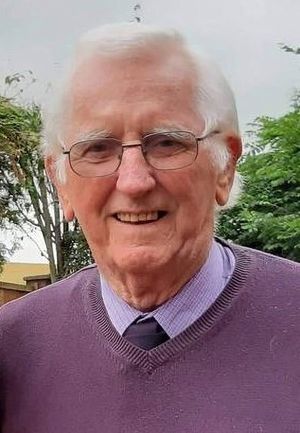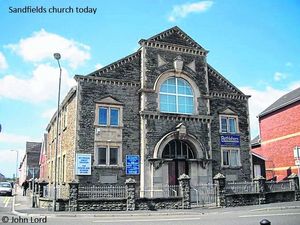A nameless group
Who are they? That was the question put to me about five years ago by an anxious Christian. His concern? Well, in his rural area of England a tent-mission had just been held. His concern initially was that the organizers were unwilling to identify themselves. They appeared secretive. Clearly they did not belong to any denomination or a recognized evangelical agency. Nor did they want to co-operate with Bible teaching churches in the area. Their tent-mission meetings were poorly supported by ‘outsiders’. My friend went along to one meeting in order to investigate further. Their hymn-book was different. The people themselves appeared serious, respectable and sincere. They emphasized the Bible but their views seemed to be off-centre. The Christian felt extremely uneasy. But who were they?
Names for the nameless
We soon discovered the answer to the question. The tent mission had been arranged by a group which officially does not have a name. However, it has been given many names such as The Nameless House Church, the Friends, the Dippers, the Secret Sect, Pilgrims, Tramp Preachers, the Jesus-Way, Reidites and Irvinites. They are sometimes called ‘Cooneyites’ after one of their early leading preachers, Edward Cooney, who came from Enniskillen. They are also called ‘Go-Preachers’, a title based on Matthew 10:7 where Jesus told his disciples, ‘And as you go, preach …’ Another name given them is ‘The Two-by-Twos’, following Mark 6:7 where we are told the Lord ‘called the twelve to Him and began to send them out two by two…’ (see also Luke 10:1).
The group registered with the UK government in 1914 as ‘The Testimony of Jesus’, and in 1942 with the USA government as ‘Christian Conventions,’ and again in Australia and New Zealand as ‘Christian Assemblies.’ Yet they still pride themselves on not having a name. But why? The answer is that they claim to be the ‘true’ and ‘original’ New Testament Church started by Jesus. For this reason, some followers have referred to the group as ‘The Truth’ or ‘The Way’. For convenience, I will refer to them as ‘The Group’. There have, in fact, been serious divisions among the members, and a much smaller part of the group can be more easily identified as Cooneyites. But more of that later.
Where do they meet?
Their ‘fellowship meetings’ are held in the homes of members, and only members are allowed to attend. They are opposed to the use of church buildings and regard their use as pagan, for ‘God dwells not in temples made with hands’ (Acts 7:48; 17:24). Houses, therefore, are regarded as the New Testament norm for group meetings. An annual convention is held and, at intervals, they invite outsiders to their missions held in tents or rented halls.
Do they condemn other churches?
Yes, they condemn all other churches and clergy. There are several reasons for this. First of all, they think that other churches hinder people, whether sincere or hypocritical, from being saved. In some cases, of course, this may be true. Secondly, they believe that the clergy encourage hypocrisy, self-righteousness and greed. Thirdly, they consider that the instructions given by the Lord to his twelve apostles should apply permanently to all those he sends to preach. For example, he sent the Twelve and the Seventy without a wage, house or other provisions, but promised that he would provide for their needs. Any ministry that does not conform to these criteria is viewed as invalid. In the early years especially, the Group regularly denounced the clergy, and Christendom generally, as ‘Babylon’.
The only genuine servants of the Lord, they insist, are their own itinerant preachers or workers, who forsake all possessions in order to preach ‘the apostolic Word’. Individuals can be saved only through hearing the gospel preached by their ‘workers’, this is called the ‘Living Witness’ doctrine, developed in the Group between 1905-1907 and later caused division.
What is their history?
While the Group started and developed in Northern Ireland, the story begins with a Scotsman, William Irvine, who in 1893 was converted in Motherwell through the preaching of a Presbyterian minister, John McNeil. Irvine spent two years training in John Anderson’s Bible College in Glasgow, before joining the Faith Mission in 1895 as a ‘pilgrim’ or evangelist. The mission’s policy was that each worker should trust God to provide all his needs, and gifts were only distributed to workers as money became available. A year later Irvine was sent to County Antrim and then to County Clare. A dynamic preacher, Irvine had considerable success in missions, with many genuine conversions.
But Irvine was opposed by the established churches and became critical of them; he also distanced himself gradually from the Faith Mission. He did not want gifts from them nor did he want to follow mission policy in sending converts back to their own denominations. By 1901 he had severed ties completely with the Faith mission and gathered a nucleus of converts and ‘workers’ around himself.
The story now turns to Enniskillen and to Edward Cooney, who was converted in 1884. He was an effective preacher both in churches and in the open air; in Northern Ireland I have met older believers who were impressed and helped by his open-air preaching. Cooney met Irvine in 1897 and they began to preach together from 1901. By 1904 there were 150 ‘Go-Preachers’ associated with the Group who held missions in halls, preached in the open air in towns and villages, baptized in rivers and established house churches.
Tensions soon appeared within the Group. Irvine was disciplined and withdrew after 1913; his latter years were tragic and deluded, and he died in Jerusalem in 1947. Cooney, too, opposed some of the Group’s teachings and was eventually excommunicated in 1928. A minority, described as ‘the remnant’ or ‘outcasts’, followed Cooney, thus splitting the movement into two separate groups. Cooney gained new converts and received some support in his native Ulster. He died in 1960.
How big are these two Groups?
Cooney’s biographer reports that his, smaller, group continues to function in about six countries: Northern Ireland, Scotland, England, Norway, Australia and the United States. The larger group from which they separated is active in many countries. A leader of this group in Ireland informed me last year that there are only six countries where they do not currently operate. Estimates concerning their membership vary from 200,000 to 700,000 worldwide. A former member, Lynn Cooper, estimates the real figure to be between 250,000 and 500,000 members. However, the influence of this larger group is considerable, particularly in countries like Ireland; they are also relatively strong and active in England and Scotland, but weaker in Wales.
A warning
I will detail some of the Group’s distinctive beliefs and practices in the next article, but here I want to issue a warning. Although the Group emphasizes the bible and the life, as well as the death, of Jesus Christ, it seriously distorts the free grace of God and modifies biblical teaching concerning the sacrifice of Christ. For example, they rightly emphazise the perfect obedience of Jesus Christ in his earthly life, but then go on to claim that we are saved by his life. ‘By this complete sacrifice of his life we are reconciled to God.’ But that is not what the Bible teaches. Our Lord’s whole life was one of suffering, but the climax of his sufferings came on the cross where he died for sinners. And without the sacrifice of himself in death there would be no salvation, for ‘Without the shedding of blood there is no forgiveness’ (Hebrews 9:22).
They also wrongly interpret John 17:4 where Jesus says, ‘I have finished the work,’ claiming that this statement relates only to his life. But what does ‘finished’ refer to? Certainly all his ministry up to that point, but also something more. The contrast drawn in verses 4 and 5 is not between his life and his death, but rather between glorifying the Father on earth (which includes his life, death, resurrection and ascension) and being glorified with the Father in heaven. Remember, too, that his victorious cry from the Cross, ‘It is finished’ (John 19:30) is what marks the accomplishment of our salvation.
Challenge
What is the challenge for us? It is to understand the vital significance of the death of Christ. That Christ gave his life for his sheep, those whom God had given him before the foundation of the earth. In his life Christ perfectly obeyed God’s Law for his elect. However, that in itself does not save us. He also needed to be ‘obedient even to death, the death of the cross’ in order to suffer our punishment and atone for our sin (Philippians 2:8). Here is the good news of the gospel. It is the sinner’s only hope.
















